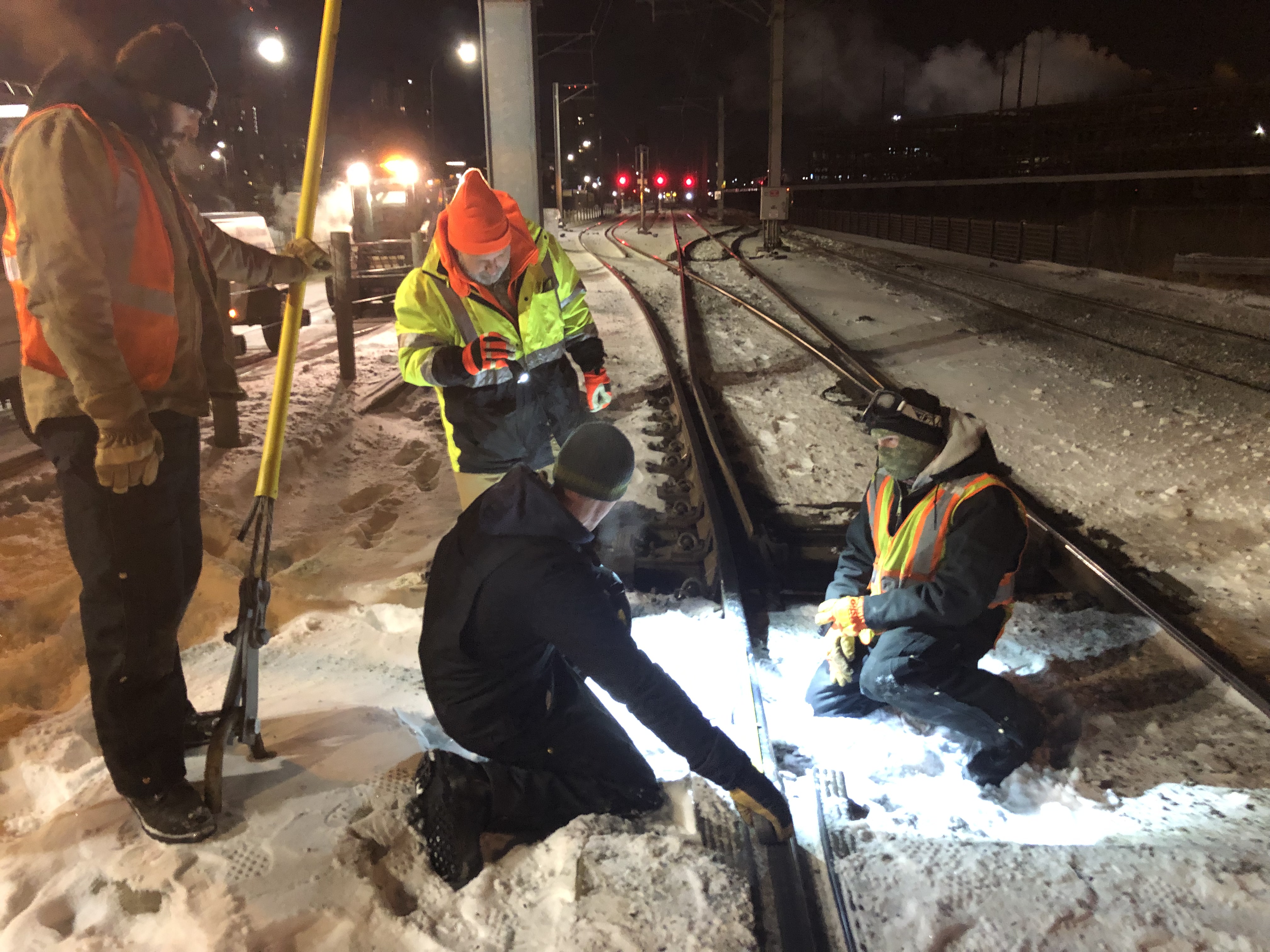 Light rail vehicles weigh around 100,000 pounds each. So the steel tracks they operate on have to be sturdy and well maintained.
Light rail vehicles weigh around 100,000 pounds each. So the steel tracks they operate on have to be sturdy and well maintained.
To ensure light rail tracks are in good order, Metro Transit’s track maintainers regularly walk end-to-end looking for small cracks, broken fasteners and other defects that aren't within standards.
Ultrasonic testing, which detects internal rail defects that can't be seen, is also performed once a year. Train operators routinely report their observations about track conditions as well.
While this type of preventative maintenance helps Metro Transit proactively address repair needs, it can be difficult to prepare for the severest cold Minnesota has to offer.
When temperatures drop to extreme lows, tracks contract and are put under an extreme amount of tension. Under such conditions, tracks can pull apart and need to be repaired.
Amid January’s historic cold, crews repaired four sections of broken rail within just two weeks. Usually, such issues come up a few times a year.
Electronic train detection equipment that helps track the location of light rail vehicles usually signals a break in the rail. The equipment relies on electrical current that can be interrupted by breaks and cracks in the track.
In most cases, cracks are small enough that they do not pose a significant safety risk. In fact, trains can often continue using track areas where cracks have been detected at lower-than-usual speeds.
To fix a broken rail, crews can heat and re-weld the track back together. In some cases, sections of track may be replaced altogether.
When it’s extremely cold out, though, welding is not an option. Instead, crews reconnect separated sections of track by bolting them together with something known as a joint bar.
To minimize service impacts, track repairs are typically made overnight or in conjunction with other maintenance activities that require light rail service to be suspended.
Above: Staff from Metro Transit's Track Department and RailWorks repair a section of track near U.S. Bank Stadium in Minneapolis on Wednesday, Jan. 30, 2019. The crack developed amid some of the coldest temperatures the Twin Cities had seen in decades.
Learn more about Metro Transit's track inspection efforts